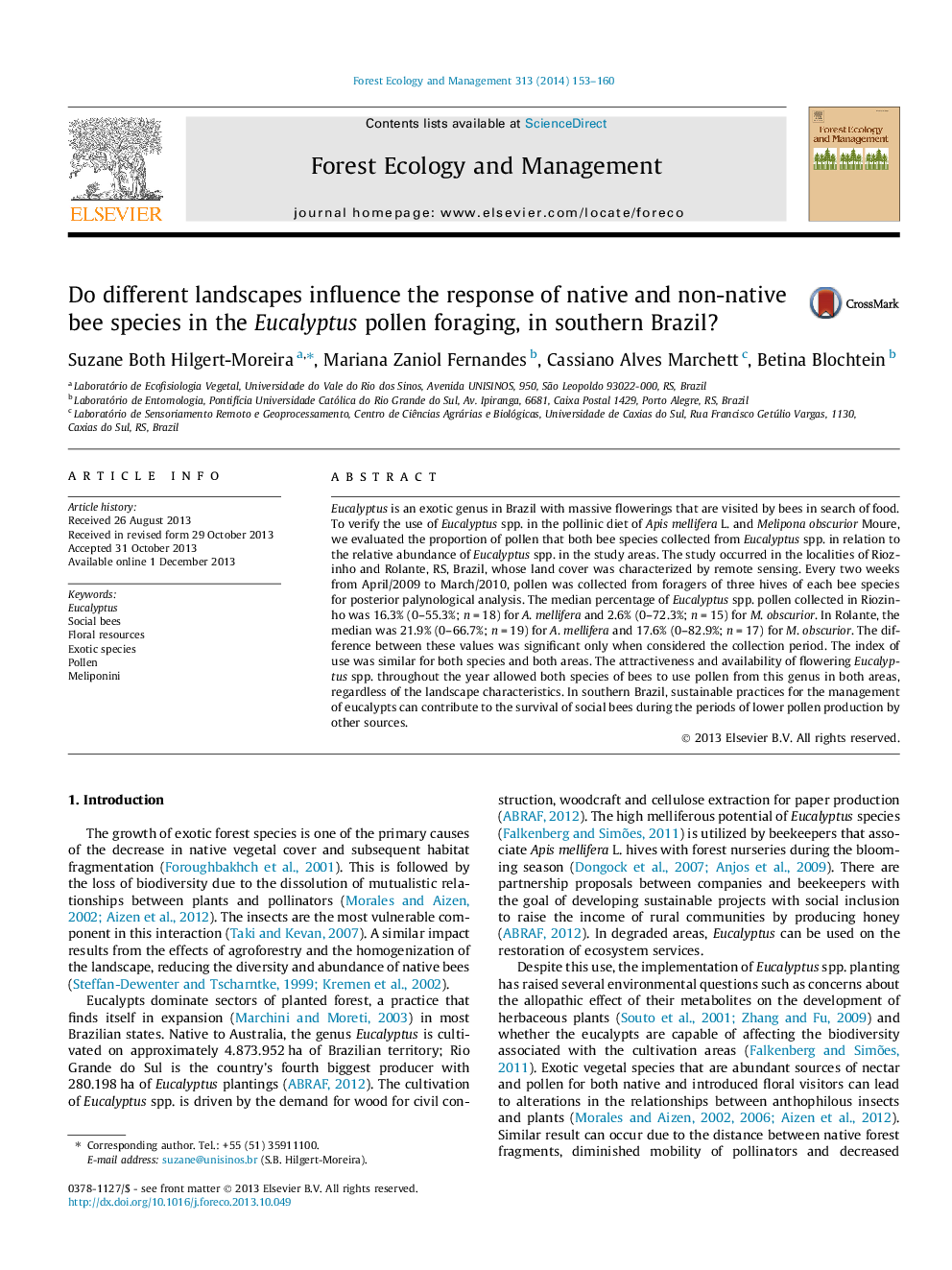| کد مقاله | کد نشریه | سال انتشار | مقاله انگلیسی | نسخه تمام متن |
|---|---|---|---|---|
| 86590 | 159199 | 2014 | 8 صفحه PDF | دانلود رایگان |
• This article contributes to the management of bee species in areas with Eucalyptus.
• Indicates Eucalyptus as an alternative source of floral resources for bees.
• Shows the strong relationship of Eucalyptus with a vulnerable native bee species.
• Reports the Eucalyptus pollen on the bees’ diet in different landscapes.
Eucalyptus is an exotic genus in Brazil with massive flowerings that are visited by bees in search of food. To verify the use of Eucalyptus spp. in the pollinic diet of Apis mellifera L. and Melipona obscurior Moure, we evaluated the proportion of pollen that both bee species collected from Eucalyptus spp. in relation to the relative abundance of Eucalyptus spp. in the study areas. The study occurred in the localities of Riozinho and Rolante, RS, Brazil, whose land cover was characterized by remote sensing. Every two weeks from April/2009 to March/2010, pollen was collected from foragers of three hives of each bee species for posterior palynological analysis. The median percentage of Eucalyptus spp. pollen collected in Riozinho was 16.3% (0–55.3%; n = 18) for A. mellifera and 2.6% (0–72.3%; n = 15) for M. obscurior. In Rolante, the median was 21.9% (0–66.7%; n = 19) for A. mellifera and 17.6% (0–82.9%; n = 17) for M. obscurior. The difference between these values was significant only when considered the collection period. The index of use was similar for both species and both areas. The attractiveness and availability of flowering Eucalyptus spp. throughout the year allowed both species of bees to use pollen from this genus in both areas, regardless of the landscape characteristics. In southern Brazil, sustainable practices for the management of eucalypts can contribute to the survival of social bees during the periods of lower pollen production by other sources.
Journal: Forest Ecology and Management - Volume 313, 1 February 2014, Pages 153–160
